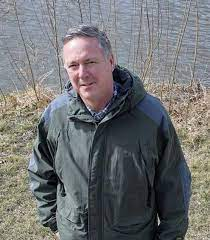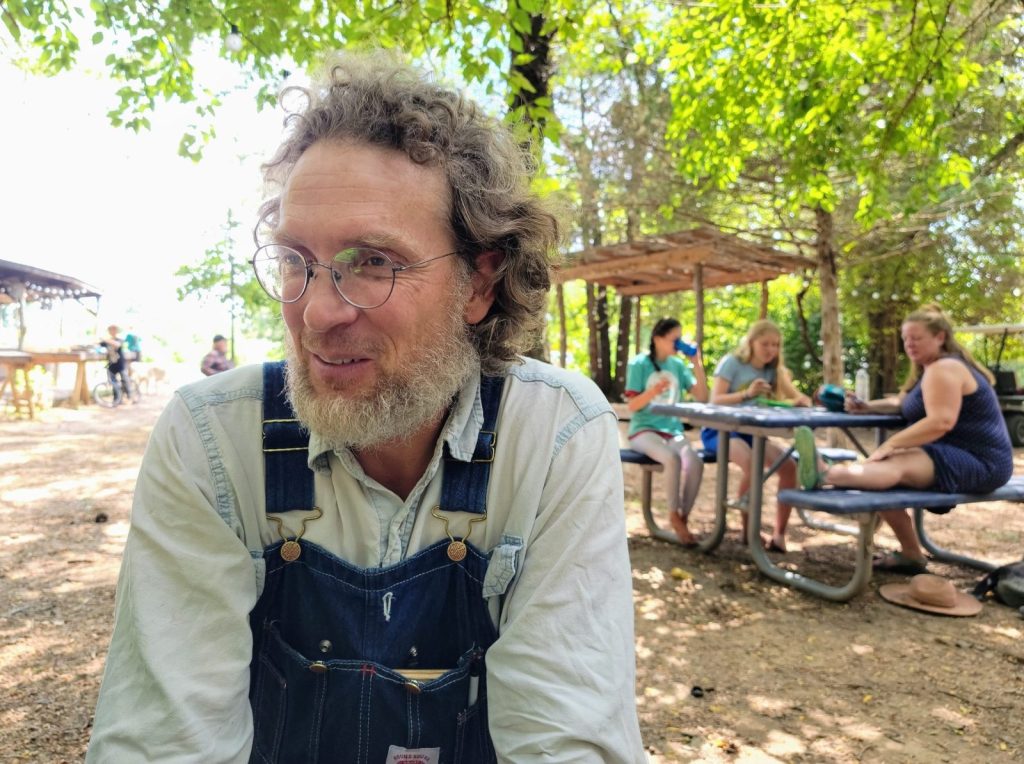Stream lover, fisherman and researcher, Dr. Chris Jones has struggled with the link between agriculture and poor water quality for decades. Excessive animal waste seeping through his home state of Iowa has contaminated the public's drinking water and recreational streams, he says. Jones spells out the science and human impact in a new book with the jarring title, “The Swine Republic.”
Now he’s headed to Springfield with a cautionary tale for Missouri.
Jones, a longtime water quality engineer and researcher, will share the stage on Nov. 17 at Drury University with other clean-ag advocates including Springfield farmer Curtis Millsap and northern Missouri row-crop and livestock farmer Doug Doughty. The event is part of Jones’ book tour, but the goal is to create awareness of both the threats and solutions to the agriculture/clean water dilemma.
The threats: corporate livestock operations that defy regulations, independent farmers who lose soil over time through overtilling, and state laws that fail to protect the waters from ag-related pollution.
The solutions: More and stricter enforcement of clean water laws as they relate to agriculture, and landowners who adopt farming methods proven to help keep water and nutrients in the soil, soil on their fields and manure out of their water. Millsap and Doughty work at mastering those steps daily, on vastly different farm operations.
Want to go?
Dr. Chris Jones will lead a panel discussion and talk about his book, “The Swine Republic: Struggles with the Truth about Agriculture and Water Quality,” at 6 p.m. Nov. 17 in the Judy Thompson Executive Conference Center, 900 N. Benton Ave., at Drury University. The event is free and open to the public. The book will be available for purchase and signing.
Other panelists include:
- Springfield’s Curtis Millsap, on how Millsap Farms plays a role in nurturing soil and preserving water
- Missouri rural community activist Jessica Piper, on the challenges facing rural communities
- Tim Gibbons, communication director of the Missouri Rural Crisis Center, on the detrimental effects of corporate agriculture consolidation
- Livingston County crop and livestock farmer Doug Doughty, on successful practices to limit soil and nutrients from leaving their fields
The cost of abundance
As Jones explains in his book, concentrating cropland and livestock creates efficiencies in production, transportation, fertilization — and wealth for the operators. But there’s a cost.
Among his concerns are Concentrated Animal Feeding Operations, or CAFOs, facilities that keep a large number of animals confined to a small, densely populated space. Some are blamed for sidestepping regulations — if regulations exist at all — and discharging excess animal waste into waterways. That excess raises the concentration of nitrates linked to issues such as colorectal cancer, thyroid issues and birth defects.
City dwellers face costs, too. “Everyone is downstream from someone else, and city dwellers should care because their water comes from ‘upstream', especially if they are using a river source,” Jones says. “Polluted water is more expensive to treat (process) so that it is safe for human consumption, and municipal water treatment rarely removes all of a contaminant.”
Iowans know that all too well. A 2022 report by Iowa Public Radio revealed that Des Moines Water Works, Iowa’s largest drinking water utility, had to use its nitrate removal facility for the first time since 2017 after nitrate levels spiked in Iowa’s rivers and streams. According to the report, the CEO of the facility linked the elevated nitrate concentrations to land use practices upstream, such as the use of agricultural fertilizer on farms.
Jones explains. “Firstly we have to understand that many of our problems are ones of scale, that is, we just are doing too much within a defined area. The number of animals that we have in a particular watershed needs to align with what that watershed can endure and still have some ecological integrity.
“In some areas,” he adds, “production is so intense that if even every farmer was doing things perfectly, we would still have intolerable pollution. The best model is one that includes a diversity of crops and that has integrated crop/livestock systems. These help build soil health and reduce nutrient loss.”

Doughty, the Livingston County cattle and crop farmer, says northern Missouri’s Thompson and Grand rivers are already on the “impaired” list as a result of our state’s agricultural runoff.
“We’re not trying to do away with CAFOs and we’re not just totally anti-CAFO, but we are wanting to make sure they do things right, follow nutrient management plans, not spreading excessive manure and commercial fertilizer and polluting our water,” Doughty says.
“Missouri may not have quite the overall animal waste/nutrient issues as Iowa,” he says, “but our state laws favor industrial CAFOs. There’s little recourse for neighbors or local governments to object.”
Water quality advocates were dealt a blow this year when the Missouri Supreme Court ruled in favor of legislation that prohibits local governments such as county commissions and public health departments from imposing regulations on air and water that are more restrictive than the state’s regulations. Rural residents and clean water advocates say Missouri’s existing regulations are flimsy, and the new Senate Bill 391 favors agricultural pollutors at the expense of safe water and public health.
A threat on the homefront
Close to home, residents of communities near the Pomme de Terre River and lake are waging a campaign to protect the recreational waters from treated wastewater created by a Pleasant Hope-based meatpacker, Missouri Prime Beef Packers. The company says it is running out of capacity onsite to process and release wastewater, and wants a permit to release up to 350,000 gallons of wastewater generated through beef processing daily.
Area residents are hopeful after the Missouri Department of Natural Resources on Nov. 7 issued a draft notice of its intent to deny the meatpacker a permit to dump its wastewater into the river. The draft decision won’t be final until after DNR’s public hearings virtually on Dec. 12 and Dec. 19, and in-person on Jan. 6 at the Pleasant Hope Middle School Gym.
All farms have a role
Doughty and his wife grow corn and soybeans, and keep a small cow-calf herd on their 500-acre farm in northwest Missouri.
“It’s not just the CAFOs,” he says. Some large- and small-scale farms can be just as big a threat to the environment by over-tilling, overuse of crop and grazing fields, and lack of controls on livestock access to creeks and streams.
“That’s difficult to achieve with some extreme weather events, but stopping soil erosion and nutrient pollution is our goal,” Doughty says. “We use farming practices such as no tillage, field borders/Conservation Reserve Program buffers, waterways, terraces, prairie strips, ponds, basins and more to stop soil and nutrients from leaving our fields. “The end result is that nutrients are ‘processed’ in our fields and stay in our fields — not only benefitting our bottom line, but reducing pollution in the neighborhood and beyond.”
Doughty adds, “We look at it this way: We have a sense of urgency when it comes to containing our livestock. Shouldn’t we have that same sense of urgency when it comes to containing our soil, plus the nutrients we apply?”

Small-scale farm solutions
For a change of pace and size, but not accountability, Curtis and Sarah Millsap, their 10 children and extra hands work a 25-acre operation 4 miles north of Springfield known as Millsap Farms. They grow 2½-acres of vegetables year-round — 70 different crops, 240 different varieties. They use organic techniques, never using synthetic pesticides, herbicides, or fertilizers. He also uses a homemade mulch so absorbent that it now prevents soil from running off his fields after heavy rains.
“When you till the soil, you break up the structure and you release a lot of carbon in the atmosphere,” Millsap says. “Because you’ve disturbed the structure, the soil starts moving, and you get wind erosion” — the Dust Bowl effect.
“The commonality is that both of us are stewards of photosynthesis,” Millsap says. “We’re there to help orchestrate good conditions in the soil and introduce the seeds at the right time to let photosynthesis do its job.”

